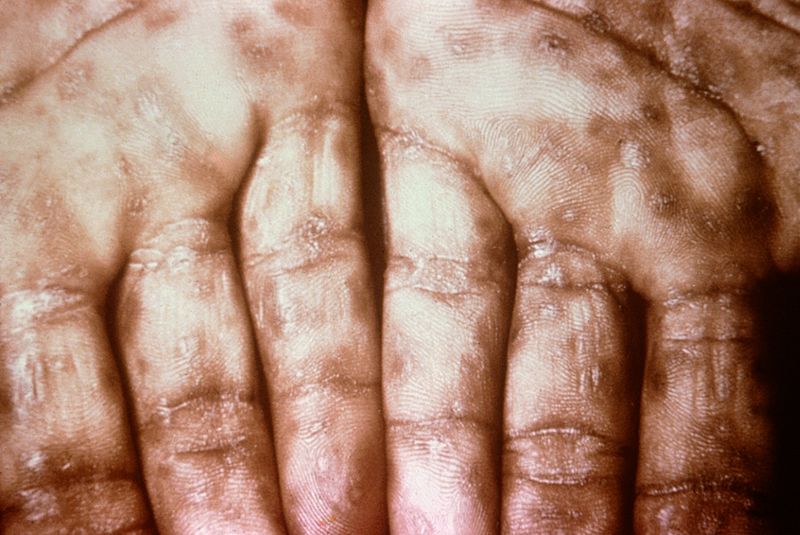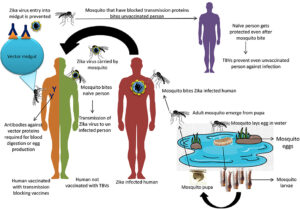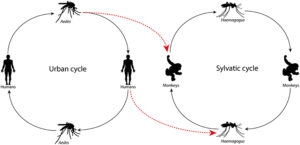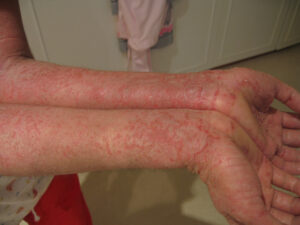Pityriasis Rosea, often abbreviated as PR, is a common skin condition that affects people of all ages but is most frequently observed in adolescents and young adults. This condition is characterized by a distinctive rash that typically begins with a single, large patch on the skin, followed by smaller patches that spread across the body. While it is not life-threatening or contagious, Pityriasis Rosea can cause discomfort and concern due to its appearance and symptoms. In this article, we will explore the overview, symptoms, causes, and treatment options for this condition.

Overview of Pityriasis Rosea
Pityriasis Rosea is a benign and self-limiting skin disorder that usually resolves on its own within weeks to months. The exact prevalence of the condition is unknown, but it is estimated to affect about one to two percent of the population annually. It occurs more commonly during the spring and fall seasons, although cases can arise at any time of the year. While the condition is not fully understood, research suggests that it may be linked to viral infections, particularly those caused by certain strains of the herpes virus family.
The hallmark feature of Pityriasis Rosea is its unique rash pattern. The initial lesion, often referred to as the “herald patch,” appears as an oval or circular red or pink spot on the skin. This patch can range in size from a few centimeters to several inches in diameter. Within days to weeks, smaller lesions begin to appear on the torso, arms, legs, and sometimes the face and scalp. These secondary lesions are often aligned along the lines of skin tension, giving them a “Christmas tree” pattern when they appear on the back.
Symptoms of Pityriasis Rosea
The symptoms of Pityriasis Rosea can vary from person to person, but there are some common features that most individuals experience. Understanding these symptoms can help differentiate Pityriasis Rosea from other skin conditions.
- Herald Patch: The first sign of Pityriasis Rosea is the appearance of a single, large, scaly patch on the skin. This patch is usually red or pink and may have a raised border. It often appears on the chest, abdomen, back, or neck.
- Rash: After the herald patch, multiple smaller patches develop over the course of one to two weeks. These patches are typically oval-shaped and may be lighter in color than the herald patch. They often appear symmetrically on both sides of the body.
- Itching: Many individuals with Pityriasis Rosea experience mild to moderate itching. In some cases, the itching can be severe and interfere with daily activities. Scratching the affected areas can worsen the irritation and lead to further complications.
- Fatigue and Malaise: Some people report feeling tired or unwell before the rash appears. These flu-like symptoms are usually mild and resolve as the rash progresses.
- Location-Specific Symptoms: The rash tends to spare the face and extremities in many cases, but it can occasionally appear on the face, hands, and feet. When it affects the scalp, it may cause temporary hair loss in the affected areas.
Causes of Pityriasis Rosea
The exact cause of Pityriasis Rosea remains unclear, but researchers believe it may be triggered by a viral infection. Evidence suggests that certain strains of the human herpesvirus family, such as Human Herpesvirus 6 and Human Herpesvirus 7, could play a role in the development of this condition. However, unlike other herpesvirus-related conditions, Pityriasis Rosea does not appear to be contagious, and there is no evidence that it spreads through direct contact.
Other potential factors that may contribute to the onset of Pityriasis Rosea include:
- Immune System Response: It is possible that the immune system’s reaction to a viral infection triggers the characteristic rash seen in Pityriasis Rosea. This theory is supported by the fact that the condition often resolves once the immune response subsides.
- Seasonal Patterns: The increased incidence of Pityriasis Rosea during the spring and fall seasons has led some experts to speculate that environmental factors, such as changes in temperature and humidity, may influence its occurrence.
- Genetic Predisposition: Although Pityriasis Rosea can affect anyone, some studies suggest that genetic factors may make certain individuals more susceptible to developing the condition.
Treatment Options for Pityriasis Rosea
Since Pityriasis Rosea is a self-limiting condition, treatment is primarily focused on managing symptoms and providing relief from discomfort. Most cases resolve within six to eight weeks without any specific intervention. However, for individuals experiencing severe itching or prolonged symptoms, several treatment options are available.
Lifestyle and Home Remedies
Simple lifestyle changes and home remedies can help alleviate the symptoms of Pityriasis Rosea:
- Avoid Irritants: Harsh soaps, hot water, and tight clothing can irritate the skin and worsen itching. Opt for gentle cleansers, lukewarm baths, and loose-fitting garments made from breathable fabrics like cotton.
- Oatmeal Baths: Soaking in a bath with colloidal oatmeal can soothe irritated skin and reduce itching. Oatmeal contains anti-inflammatory properties that may provide additional relief.
- Moisturizers: Applying fragrance-free moisturizers or emollients can help keep the skin hydrated and prevent dryness, which can exacerbate itching.
- Cool Compresses: Placing a cool, damp cloth on the affected areas can temporarily relieve itching and inflammation.
Over-the-Counter Medications
For mild to moderate itching, over-the-counter medications can be effective:
- Antihistamines: Oral antihistamines, such as diphenhydramine or loratadine, can help reduce itching and improve sleep quality if nighttime itching is a problem.
- Topical Hydrocortisone: Low-potency corticosteroid creams can be applied to the affected areas to reduce inflammation and itching. These should be used sparingly and only for short periods to avoid side effects.
Prescription Treatments
In cases where symptoms are severe or persistent, a healthcare provider may recommend prescription treatments:
- Oral Corticosteroids: For individuals with intense itching or widespread rashes, a short course of oral corticosteroids may be prescribed to quickly reduce inflammation and discomfort.
- Phototherapy: Exposure to ultraviolet light under medical supervision can help speed up the resolution of the rash. Phototherapy is particularly useful for individuals with prolonged or recurrent symptoms.
- Antiviral Medications: If a viral infection is suspected as the underlying cause, antiviral drugs may be considered in rare cases. However, their effectiveness in treating Pityriasis Rosea is not well-established.
When to Seek Medical Attention
While Pityriasis Rosea is generally harmless, there are situations where consulting a healthcare professional is advisable:
- If the rash persists for more than three months or worsens over time.
- If the itching becomes unbearable or interferes with daily life.
- If the rash spreads to unusual areas, such as the face or scalp, or if it is accompanied by other concerning symptoms like fever or joint pain.
- If you are pregnant, as Pityriasis Rosea during pregnancy may require closer monitoring due to potential risks to the fetus.
By understanding the nature of Pityriasis Rosea and adopting appropriate management strategies, individuals can navigate this condition with confidence and minimize its impact on their quality of life.





